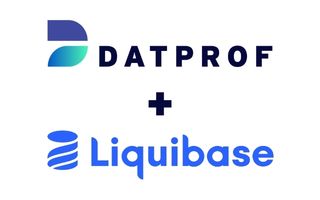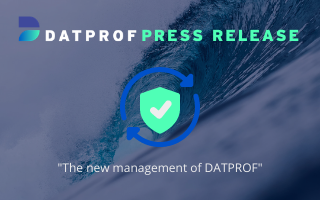Blogs
In our blogs we take you into the wonderful world of test data. There is no time for downtime, the development is always going on.
CCPA Compliance: A Guide for Software Teams on Data Privacy
CCPA Compliance:...
Why Customers Have Switched Over to DATPROF
[dsm_breadcrumbs show_home_icon="off" current_bg_color="RGBA(255,255,255,0)" _builder_version="4.23" _module_preset="default" items_text_color="#04083D" current_font="|700|||||||" current_text_color="#04083D" hover_enabled="0" global_colors_info="{}"...
The Benefits of Using Test Data Management Tools
[dsm_breadcrumbs show_home_icon="off" current_bg_color="RGBA(255,255,255,0)" _builder_version="4.23" _module_preset="default" items_text_color="#04083D" current_font="|700|||||||" current_text_color="#04083D" hover_enabled="0" global_colors_info="{}"...
No Log4j vulnerabilities found in DATPROF Software
[dsm_breadcrumbs show_home_icon="off" current_bg_color="RGBA(255,255,255,0)" _builder_version="4.23" _module_preset="default" items_text_color="#04083D" current_font="|700|||||||" current_text_color="#04083D" hover_enabled="0" global_colors_info="{}"...
Simplifying test data and database changes
[dsm_breadcrumbs show_home_icon="off" current_bg_color="RGBA(255,255,255,0)" _builder_version="4.23" _module_preset="default" items_text_color="#04083D" current_font="|700|||||||" current_text_color="#04083D" hover_enabled="0" global_colors_info="{}"...
4 questions to find out if test data management is for you
[dsm_breadcrumbs show_home_icon="off" current_bg_color="RGBA(255,255,255,0)" _builder_version="4.23" _module_preset="default" items_text_color="#04083D" current_font="|700|||||||" current_text_color="#04083D" hover_enabled="0" global_colors_info="{}"...
PRESS RELEASE: DATPROF takes the next step with new management
[dsm_breadcrumbs show_home_icon="off" current_bg_color="RGBA(255,255,255,0)" _builder_version="4.23" _module_preset="default" items_text_color="#04083D" current_font="|700|||||||" current_text_color="#04083D" hover_enabled="0" global_colors_info="{}"...
PRESS RELEASE: Heineken anonymizes test data with DATPROF software
[dsm_breadcrumbs show_home_icon="off" current_bg_color="RGBA(255,255,255,0)" _builder_version="4.23" _module_preset="default" items_text_color="#04083D" current_font="|700|||||||" current_text_color="#04083D" hover_enabled="0" global_colors_info="{}"...
DATPROF’s valuable partnerships
[dsm_breadcrumbs show_home_icon="off" current_bg_color="RGBA(255,255,255,0)" _builder_version="4.23" _module_preset="default" items_text_color="#04083D" current_font="|700|||||||" current_text_color="#04083D" hover_enabled="0" global_colors_info="{}"...
Save on storage with test data subsetting
[dsm_breadcrumbs show_home_icon="off" current_bg_color="RGBA(255,255,255,0)" _builder_version="4.23" _module_preset="default" items_text_color="#04083D" current_font="|700|||||||" current_text_color="#04083D" hover_enabled="0" global_colors_info="{}"...
New release: DATPROF Privacy 4.1
[dsm_breadcrumbs show_home_icon="off" current_bg_color="RGBA(255,255,255,0)" _builder_version="4.23" _module_preset="default" items_text_color="#04083D" current_font="|700|||||||" current_text_color="#04083D" hover_enabled="0" global_colors_info="{}"...
Rewind or restore your test data set?
[dsm_breadcrumbs show_home_icon="off" current_bg_color="RGBA(255,255,255,0)" _builder_version="4.23" _module_preset="default" items_text_color="#04083D" current_font="|700|||||||" current_text_color="#04083D" hover_enabled="0" global_colors_info="{}"...












